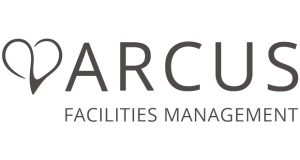 Steve Butler, CEO of Punter Southall Aspire and author of Inclusive Culture: Leading Change Across Organisations and Industries offers some personal advice on creating a diverse and inclusive workplace
Steve Butler, CEO of Punter Southall Aspire and author of Inclusive Culture: Leading Change Across Organisations and Industries offers some personal advice on creating a diverse and inclusive workplace
The business argument for greater diversity and inclusion in the workplace is simply this: the more ways in which you can look at a problem, the better chance you have of solving it. Added to that is the fact that every business should reflect the clients and customers it serves if it really wants to understand and connect with them.
Making sure that the business I manage is indeed reflective of society hasn’t always been easy. It has meant radically adjusting the lens through which I see the world. At times, I have struggled to find the right words to use with staff from minority groups. I have had to find ways to encourage my teams to change the way they work and persuade people in my business that the effort is worth it.
FEMALE REPRESENTATION
Our most significant strategic issue was the under-representation of female employees in the leadership structure to avoid the risk of groupthink. To address this, we replaced the existing executive committee of eight senior male managers with seven operational committees that included representatives from across the business. This led to more diverse, multigenerational teams contributing to the leadership and business strategy, and participation from women at strategy-level committee meetings increased from 0 per cent to 38 per cent. Women taking part in the new style of management meetings say that having their voices heard and valued has opened a door. Many have fed back that being involved in these meetings has increased their confidence and participating in decision-making has broadened their horizons.
Lindsay Butterworth, Associate Director, Strategic Planning commented: “I was thrilled when Steve established the Operating Committees, taking a leap forward in gender diversity within the business. Since becoming part of the operating committee, I’ve gained a greater insight into the business, allowing me to contribute confidently to the business strategy and decision-making. Already, I’m seeing huge benefits to the company of allowing a broader involvement and diversity in the management structure.”
Added Sarah Tolson, Director of Marketing: “Becoming part of the Operating Committee has broadened my understanding of the business and the challenges faced by colleagues in different roles; I can take this back to my team. On a personal level, I enjoy taking the meetings and feel my point of view is always valued.”
PERSONAL INSIGHTS
The style of management meetings has changed too. They begin with a sign in where each attendee takes a minute or two to update the others on what’s happening in their life, particularly their personal development and wellbeing. Although there was some hesitance at first, everyone has fully embraced the approach, not least because it signals that our priority as a business is the welfare of our people. Starting the meeting with a personal reflection breaks down reserve and sets the tone for the meeting; then, when you reach the business section, people are much more transparent and responsive, and the meeting is far more productive. It also creates better understanding of what other pressures people in the team are dealing with in their lives.
This can reduce disagreements and tensions, heading potential rifts off at the pass. Knowing what issues they are facing also gives insights into how to manage individuals in that team. It has improved team communication and increased openness and understanding. Critically, it has broken down the macho approach that’s so common in finance businesses, where sales and profit are the beginning, middle and end of meetings.
MENTORING
We have embraced reverse mentoring: when the mentee is the older or more senior person in the pair, and the mentor is the younger or more junior person. Reverse mentoring can be challenging, and some of the first few meetings can be uncomfortable or even awkward. The senior manager may struggle with taking advice from someone who is in a more junior role in the organisation; a more junior employee may not feel comfortable with being transparent about their concerns and priorities or with challenging the thinking of someone who could hinder their career. The most important factor that will shape these meetings in the positive manner intended is mutual respect. Having respect for one another is a hallmark of a mentoring relationship, no matter who the mentee or mentor are. Respect for one another will show up in how the pair speak to one another, listen to one another, treat one another, and treat their relationship. With respect, comes trust. When mentees and mentors believe the best in someone and know they are open to giving or receiving feedback, open to learning from or teaching something to their partner, and acting with the best intentions, they build trust in them. This trust may not come easily, but it is essential for a mentoring relationship to work.
Making these changes has not been easy and there is still plenty of work to do, but actions have been generally positive, well-received, and importantly progressive. By taking a focused approach to lead and manage diversity and inclusion within the business, the outcome has been far reaching.





